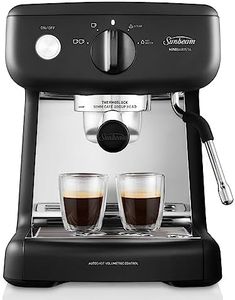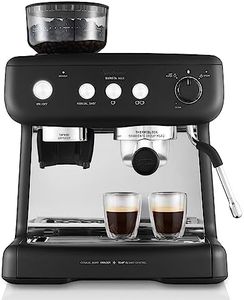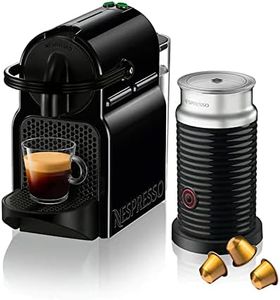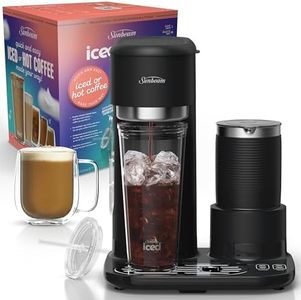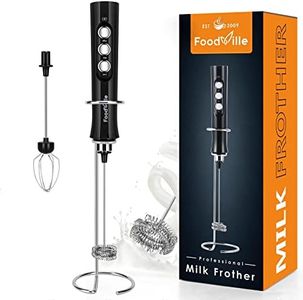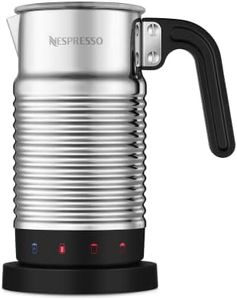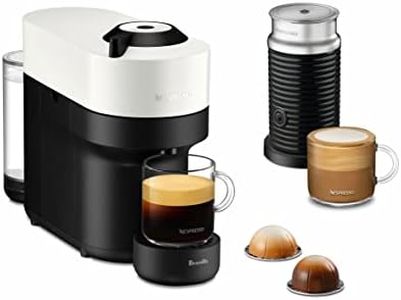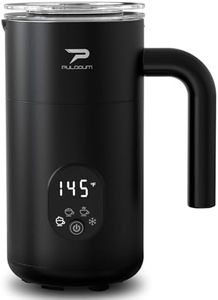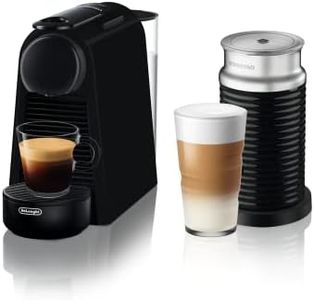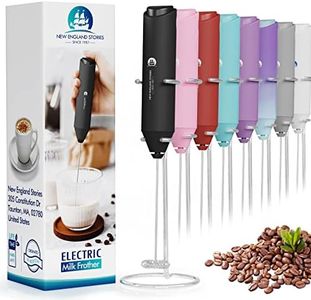We Use CookiesWe use cookies to enhance the security, performance,
functionality and for analytical and promotional activities. By continuing to browse this site you
are agreeing to our privacy policy
10 Best Milk Frothers
From leading brands and best sellers available on the web.Buying Guide for the Best Milk Frothers
Choosing the right milk frother can make a big difference in how you enjoy coffee-based drinks at home. Whether you like cappuccinos, lattes, or just want foam for hot chocolate, understanding the types of frothers and their key features will help you select a product that fits your needs and lifestyle perfectly. The ideal milk frother should suit how often you use it, the kind of drinks you like to make, and how much effort you want to put into the process.Type (Manual, Handheld, Electric, Steam Wand)The type refers to how the frother operates and it’s important because it affects convenience and foam quality. Manual frothers usually use a plunger, handheld frothers are small battery-powered whisks, electric frothers are countertop devices that heat and froth, and steam wands are attached to espresso machines. Manual types are simple but take more effort, handheld are compact but require you to heat milk separately, while electric and steam wands are the easiest but often larger. Choose manual or handheld for occasional use and low space, electric for hands-free frothing and heating together, and steam wand if you want café-quality microfoam and already own an espresso machine.
CapacityCapacity means how much milk the frother can handle per session, which is important depending on how many servings you usually prepare. Small frothers hold less than 150ml, medium hold 150-300ml, and large can do over 300ml. If you make drinks for one, a small one is enough; for two people regularly, a medium is good; and for gatherings or families, go with a larger model to avoid multiple batches.
Milk Heating CapabilitySome frothers can heat milk while frothing, while others only froth cold or preheated milk. This matters because it determines if you need extra steps or equipment. Some models have a hot/cold switch, while handheld and manual frothers generally can't heat. If you want all-in-one convenience, select a model that heats and froths; if you’re okay with using your microwave or stovetop, you can pick any type.
Foam Texture (Microfoam vs. Dense Foam)Foam texture refers to how fine or thick the milk foam is and it’s important because it affects the taste and appearance of your drinks. Some frothers make light, silky microfoam ideal for lattes, while others make thicker, denser foam better for cappuccinos. Electric and steam wand frothers usually offer more control for microfoam, while manual and handheld versions often make bigger bubbles. Choose based on which drinks you enjoy most: lattes need microfoam, cappuccinos need dense foam.
Ease of CleaningEase of cleaning refers to how complicated it is to wash the frother after use, influencing how likely you will use it often. Some models have dishwasher-safe parts, while others need handwashing. Simpler handhelds or manual versions are quick to rinse, while larger electric frothers may have more parts. If you value convenience, make sure the frother has parts that are easy to take apart or dishwasher friendly.
Build Quality and MaterialThe build quality and material of your frother impact its durability and how it feels to use. Most frothers are made from plastic, stainless steel, or glass. Stainless steel and glass are generally more durable and safer for food, while plastic is lighter and less expensive but might not last as long. If you plan to use your frother daily, choose a solid, high-quality material; for occasional use, a lighter plastic model may suffice.
